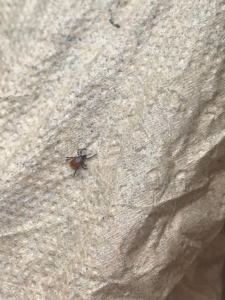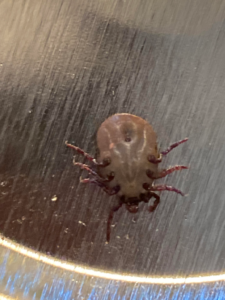Finding ticks inside your home can be concerning, as these pests can carry diseases that affect both humans and pets. If you encounter ticks in your residence, it’s essential to act promptly and effectively. Here’s a guide on the steps to take to manage the situation safely.
1. Remain Calm
The first step is to stay calm. Ticks can be removed and eliminated without causing panic. Assess the situation and determine the extent of the infestation before taking further action.
2. Identify the Ticks
Carefully examine the ticks you find. Different species may have varying levels of risk associated with them. If possible, capture a tick in a container or a sealed plastic bag for identification later. You can refer to local resources or pest control for assistance in identifying the tick species.

3. Remove Ticks Safely
If you find ticks on your body or your pets, remove them carefully. Use fine-tipped tweezers to grasp the tick as close to the skin’s surface as possible. Pull upward with steady, even pressure. After removal, clean the bite area and your hands with rubbing alcohol or soap and water.
4. Check for More Ticks
Inspect your living space for more ticks. Look in areas where your pets frequent, including their bedding, toys, and favorite resting spots. Also, check areas like carpets, baseboards, and upholstered furniture.
5. Clean Your Home
Thoroughly vacuum your home to remove any ticks and their eggs. Pay special attention to carpets, rugs, and furniture. After vacuuming, dispose of the vacuum bag or empty the canister outside to prevent any ticks from re-entering your home. Consider washing pet bedding and any linens in hot water to kill any ticks.
6. Treat Your Pets
If you find ticks on your pets, consult a veterinarian for appropriate treatment. They may recommend topical treatments, oral medications, or tick collars to help manage the tick population on your pets and prevent future infestations.

7. Prevent Future Infestations
To reduce the risk of ticks returning, consider implementing preventive measures. Keep your lawn well-maintained by mowing regularly, trimming shrubs, and removing any debris where ticks might hide. Additionally, consider using pest control treatments around your home and yard.
8. Monitor for Symptoms
After a tick encounter, monitor yourself and your pets for any symptoms of tick-borne diseases, such as fever, rash, fatigue, or joint pain. If you notice any concerning symptoms, seek medical attention promptly.
Conclusion
Finding ticks in your home can be unsettling, but by following these steps, you can address the issue effectively. Regularly checking your pets, maintaining your living space, and staying informed about tick prevention will help keep your home tick-free. If the problem persists, consider contacting a pest control professional for further assistance.